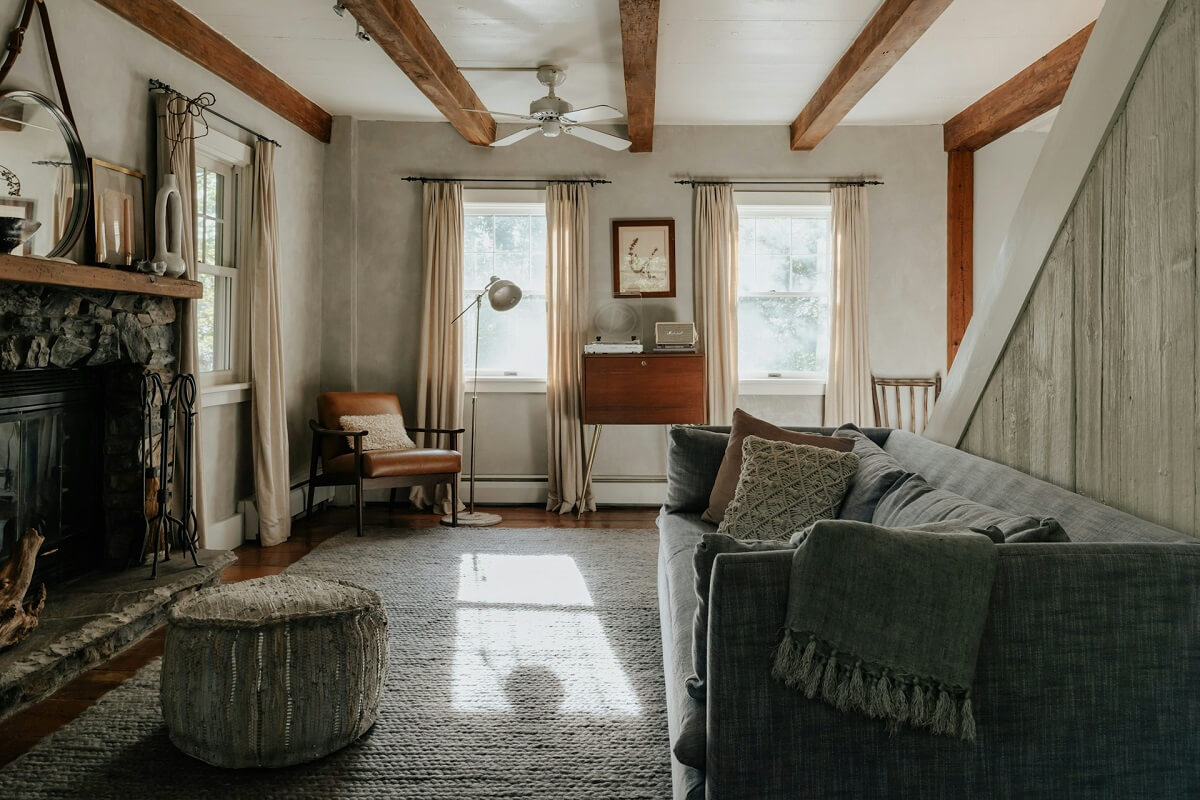A house can evolve into a place that speaks to both memory and imagination when rustic design enters the plan. Aged timber, stone, and iron form the language of warmth and strength. Sleek lighting, polished floors, and subtle finishes bring in comfort and clarity. Each texture and surface holds a trace of the past, yet every line points toward the present.
Renovation with rustic design does not mean turning a home into a cabin. It means guiding the space through contrast. Rough wood meets clean glass. Vintage fixtures meet modern geometry. The idea is not imitation but harmony, where the old breathes again within new proportions.
Every board and beam becomes part of a larger story. Modern details never erase age; they let it shine through new rhythm and order. The result feels grounded yet open, timeless yet fresh. That is the art of blending old and new in rustic renovation.
Rustic Flooring That Grounds the Space
Flooring sets the tone for every rustic interior. The right surface creates balance between warmth and structure. Each material must reveal texture, depth, and honest beauty without losing function.
Natural Wood Floors That Tell a Story
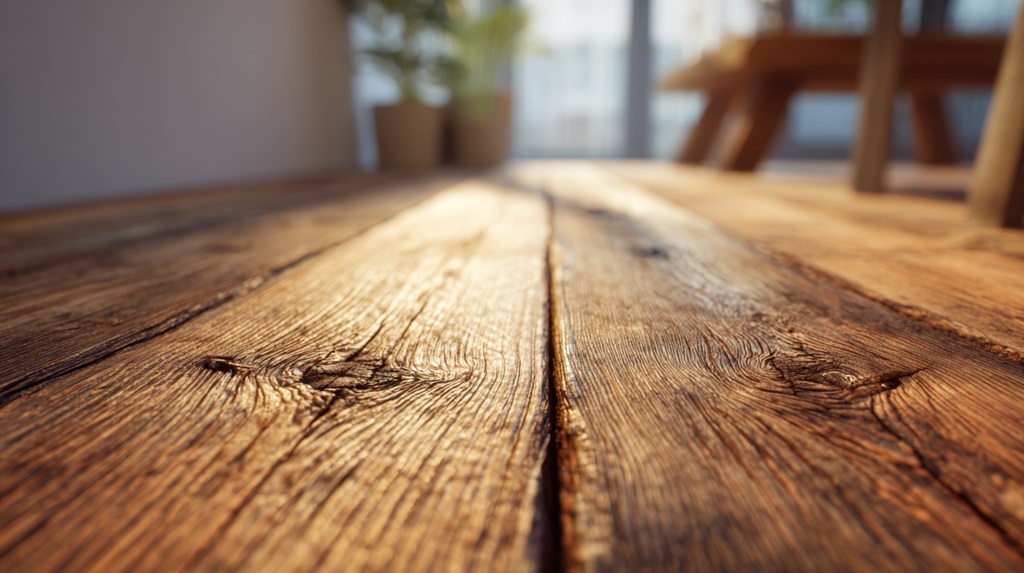
Wood remains the heart of rustic flooring. Wide planks bring a strong visual rhythm that guides the eye through the space.
Reclaimed boards carry traces of age, saw marks, and knots that add soul and character. A matte oil finish keeps the texture alive and prevents the surface from looking flat.
Every piece of wood introduces comfort, warmth, and history that connect old and new elements with ease.
Stone and Earth Underfoot
Stone gives a rustic home weight and permanence. Slate, limestone, and flagstone fit best in entryways, kitchens, and outdoor transitions.
Subtle shifts in tone make the space feel grounded and alive. The cool touch of stone balances the warmth of wood and highlights natural light.
Thin Brick
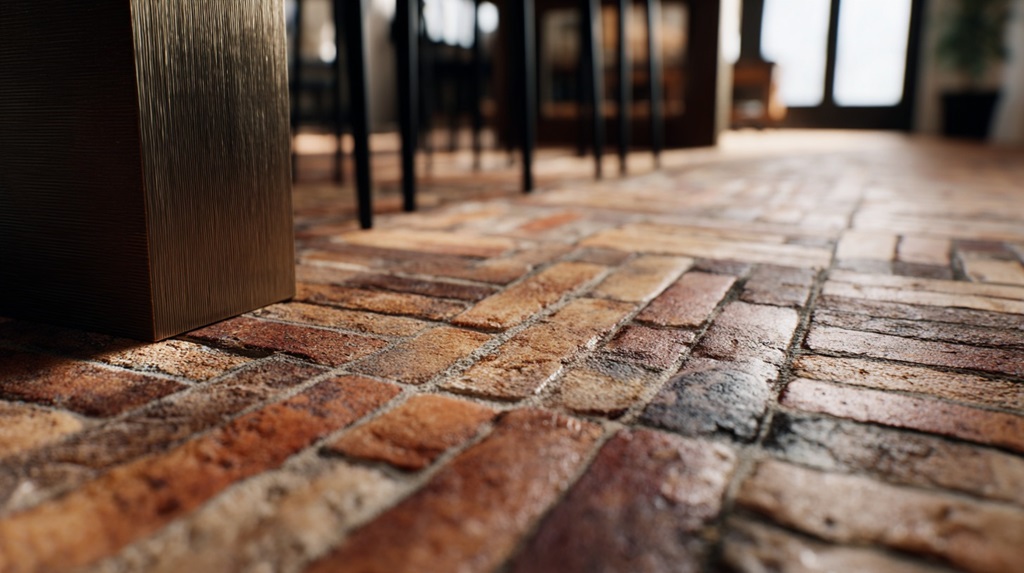
For anyone searching for a surface that feels both old and strong, thin brick for flooring becomes an ideal choice. It carries a raw, timeless charm that suits both farmhouse and modern interiors.
Thin brick works well in high-traffic areas and pairs beautifully with metal fixtures and reclaimed timber. Its slight unevenness adds visual texture that enhances the rustic theme without overwhelming the design.
Finishing Touches That Anchor the Room
- Layer natural fiber rugs such as wool or jute to soften the tone.
- Keep color schemes earthy with muted browns, grays, and reds.
- Use lighting to draw attention to grain and surface detail.
A rustic floor forms the foundation of a home that feels both settled and evolving. It connects every room through texture and craft, guiding design toward harmony between the past and the present.
Walls and Textures That Shape Warmth
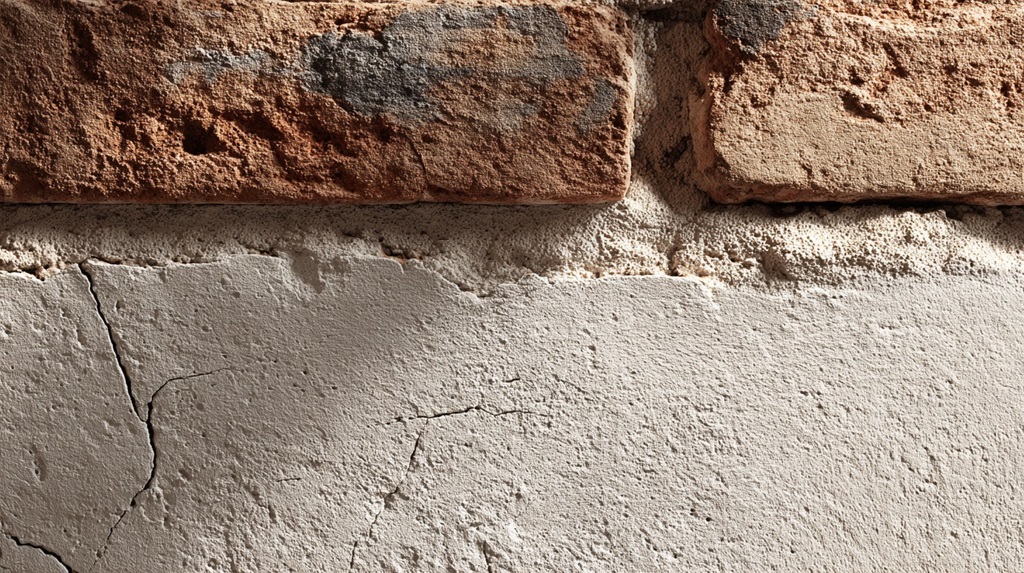
Walls carry the feeling of a home. A rustic space depends on surfaces that show life and depth. The goal is to keep things natural, with texture that tells a story without forcing attention.
Natural Surfaces
Wood, brick, and stone work best for rustic walls. Each one brings a different kind of strength. Wood adds warmth. Brick gives rhythm. Stone adds weight and cool balance. Limewash or matte plaster adds softness and makes light fall more gently across the room.
Color and Finish
Stick to natural tones like sand, gray, and clay. Those colors let furniture and wood grain stand out. Avoid shiny paint. A matte surface makes every wall feel calm and honest.
Simple Additions
- Use reclaimed wood boards to break up flat walls.
- Mix stone and plaster for contrast.
- Leave corners and edges rough for a natural look.
Walls with real texture make a home feel steady and alive. They give warmth that stays, even when the light changes through the day.
Furniture With Purpose and Heritage
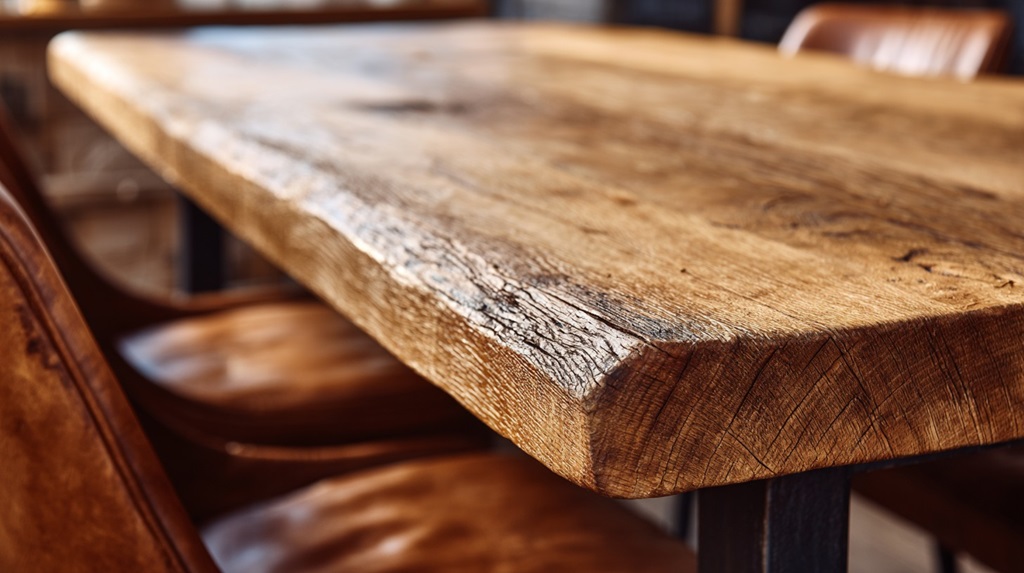
Furniture gives shape and meaning to rustic design. Each piece should serve a real purpose and feel strong enough to last. Wood and metal are the two main players.
Solid Materials
Oak, pine, or walnut gives the right base. Iron or bronze adds weight and balance. Natural wear looks good here. Scratches and dents show that the piece has lived and earned its place.
Design and Use
Big tables, simple benches, and solid chests fit best. No shiny finish, no fake distressing. Keep the lines straight and the form clean. Real materials, real use, real comfort.
Examples That Work
- Heavy wooden dining table with rough edges.
- Iron chairs with leather seats.
- Woven stools that bring texture and warmth.
- Wooden chest that doubles as a coffee table.
Rustic furniture brings honesty to every room. It does not need to impress. It only needs to belong.
Lighting That Builds Atmosphere
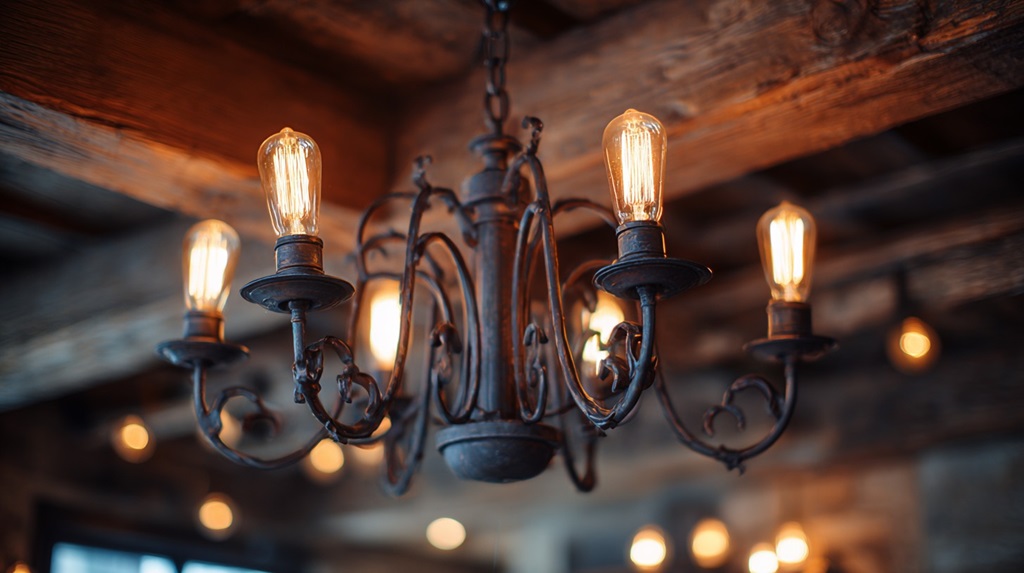
Light gives life to every surface. Rustic spaces depend on soft light that shows texture and form. It shapes mood without taking attention away from materials.
Layers of Light
Use a mix of ceiling, wall, and floor lights. Chandeliers made of iron or wood bring strength. Wall sconces highlight stone or wood grain. Floor lamps add warmth near chairs or beds.
Materials That Fit the Look
Iron, brass, or wood bases with linen or glass shades keep the style grounded. Light should glow, not glare. Warm bulbs always work better than cold white ones.
Simple Tips
- Use dimmers to control brightness.
- Keep wires and hardware simple.
- Focus on lighting that highlights texture.
Good lighting shows what makes rustic design special. It gives calm, warmth, and balance to every room.
Kitchen and Bath
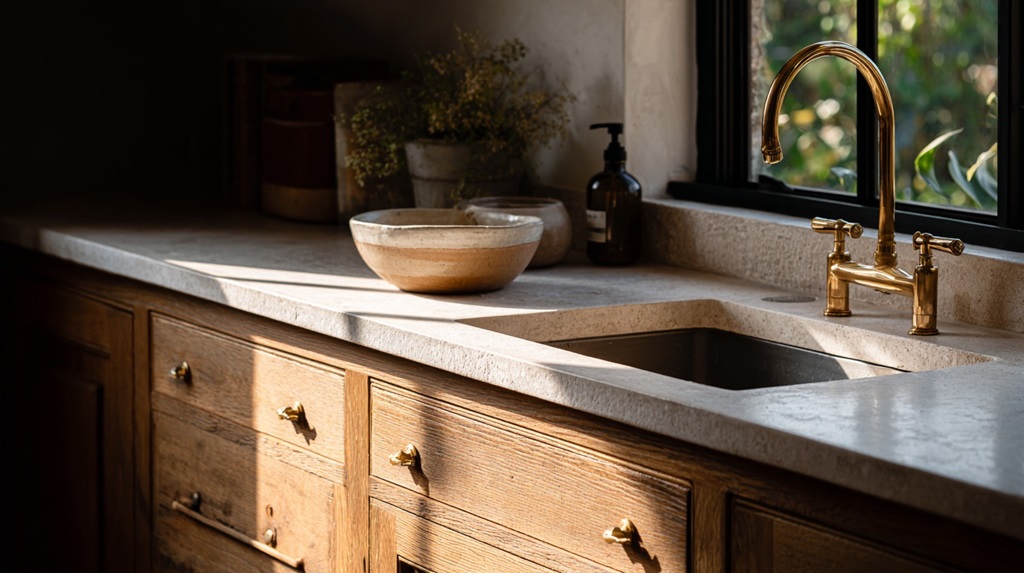
A rustic home earns its soul in the kitchen and bath. Both rooms must feel built to last. Nothing delicate. Nothing perfect. The materials should tell you where they came from.
Kitchen Built for Real Use
A kitchen with a rustic design always centers around raw materials. Wood cabinets, stone or butcher-block counters, and metal hardware form the core.
Open shelves keep everything visible. Copper pans, earthenware bowls, and solid utensils turn storage into display. Function becomes decoration through honest design.
Bath That Feels Grounded
A rustic bath works through contrast. Stone or slate floors meet smooth porcelain. A vanity made of wood with a simple vessel sink makes the room feel calm and balanced.
Brass or black iron fixtures finish the look with quiet strength. Add linen towels, a large framed mirror, and soft wall light to keep everything human and warm.
Accents and Decor That Carry History
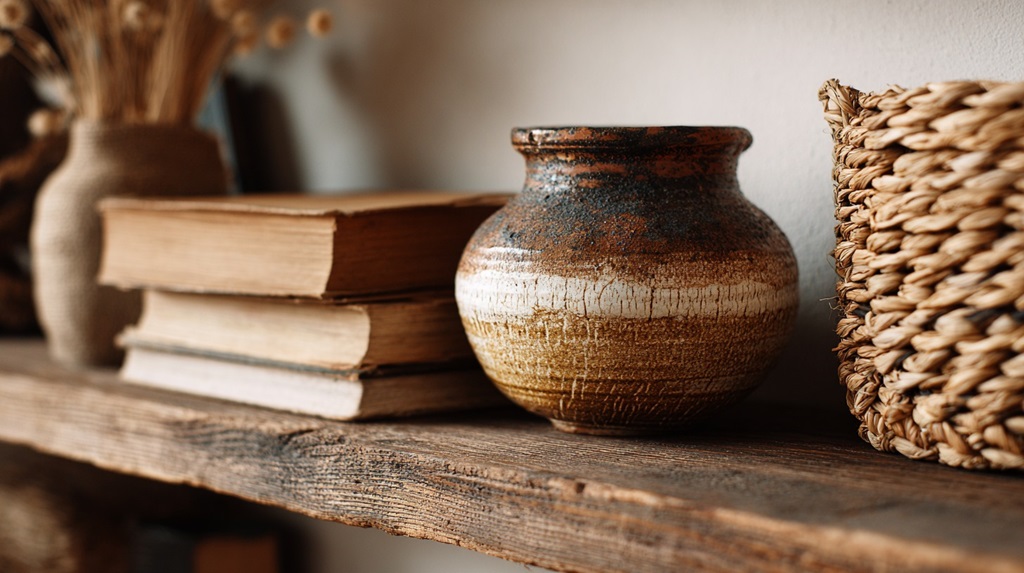
Decor gives rustic homes their voice. Each piece should connect to work, memory, or craft. Nothing random belongs here.
Objects With a Past
Clay pots, old books, woven baskets, and carved bowls add truth. Aged mirrors, candle holders, and picture frames give character without clutter. Each object must have weight, either in material or story.
How to Place Them
Keep open space around every item. A rustic interior breathes through balance. One handmade bowl on a wood shelf says more than ten store-bought trinkets. The goal is presence, not collection.
Textiles and Layers
Natural fabrics make the difference. Wool blankets, linen curtains, and jute rugs give softness that matches the hard edges of wood and metal. Use muted colors and faded tones so nothing looks too new.
Every accent should look like it belongs to the home, not be added later. The right decor makes the space feel lived in, honest, and steady.
Final Touches That Tie Old and New Together
A rustic renovation reaches completion when old and new stop competing. The goal is to make everything speak the same quiet language.
Small Details That Matter
Door handles, hinges, and switches can carry as much feeling as walls or floors. Iron, brass, and wood work best. Use similar tones across rooms to keep the flow.
Balance Between Eras
Old wood paired with modern glass. Vintage lights beside clean white walls. Reclaimed doors that open into smooth, simple spaces. That balance turns a house into a whole story where nothing feels forced.
Final Advice
- Keep lighting warm and layered.
- Let natural materials stay visible.
- Avoid plastic, chrome, and sharp contrasts.
A rustic home lives through patience and care. It is not a theme; it is a rhythm of time, touch, and quiet craftsmanship.
Each surface, fixture, and color must serve one purpose: to make the house feel human again.
The Bottom Line
A rustic home grows through work, patience, and real materials. Wood and stone build strength that lasts. Metal adds balance and edge. Light brings life into every corner. Nothing needs polish when it already has character.
Every surface should feel touched by time. Floors carry the rhythm of steps. Walls hold warmth and texture. Furniture stands solid and honest. Together they shape a place that feels calm, strong, and human.
A home built with rustic design carries peace without trying. It belongs to both past and present, standing firm in truth and craft.

